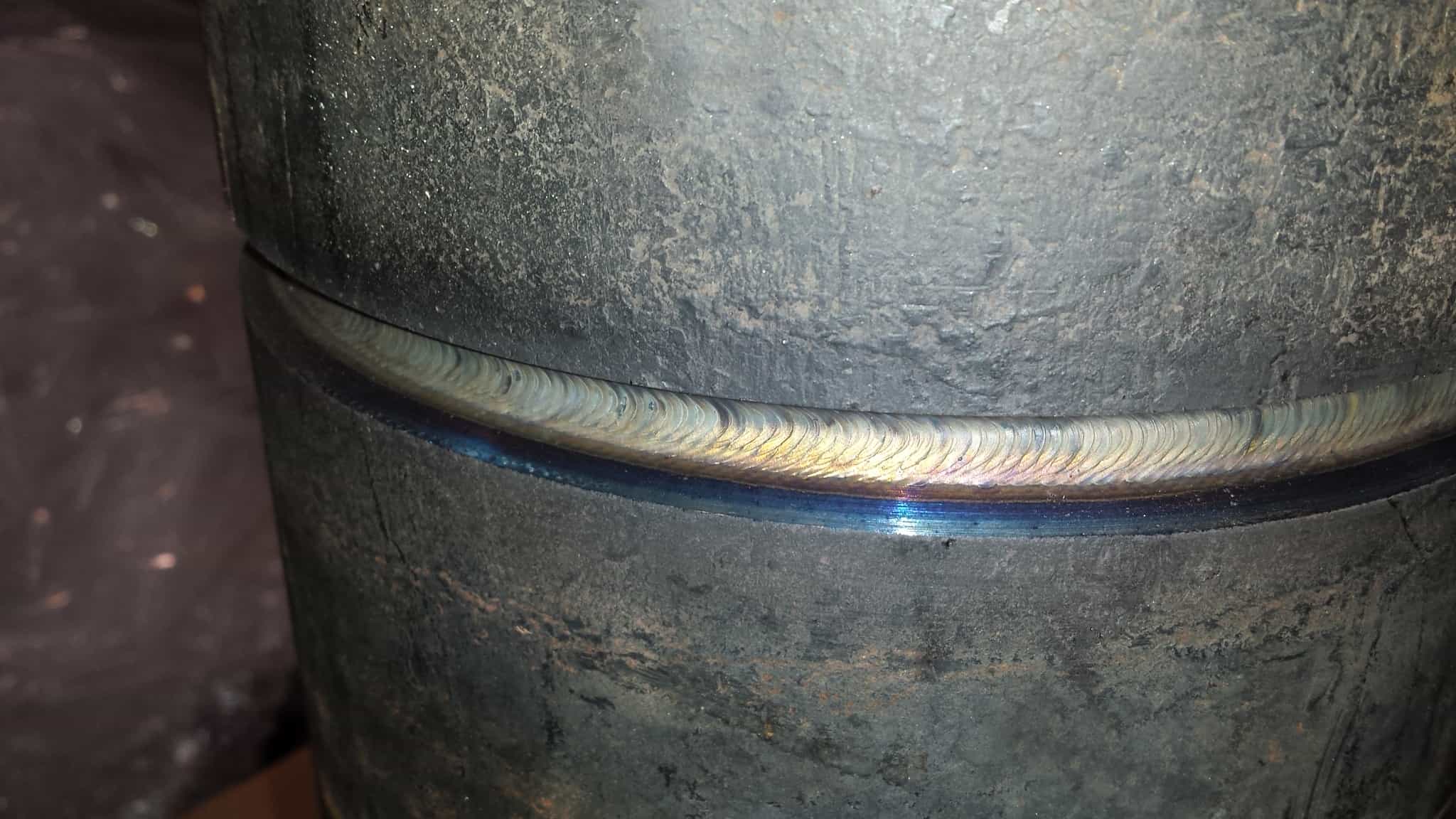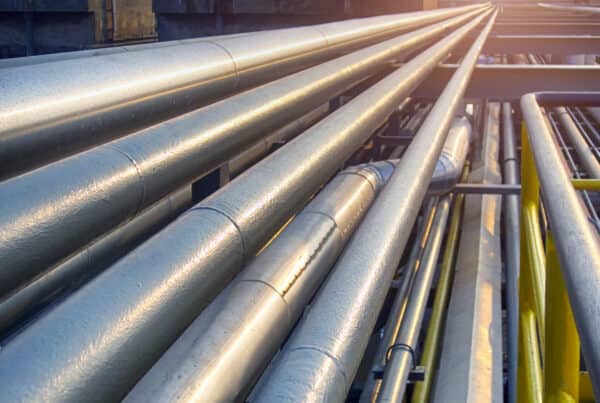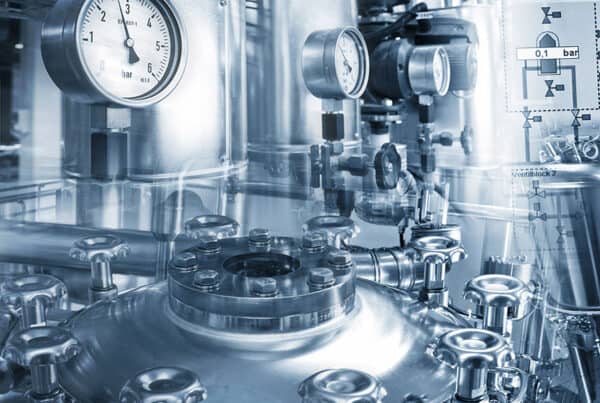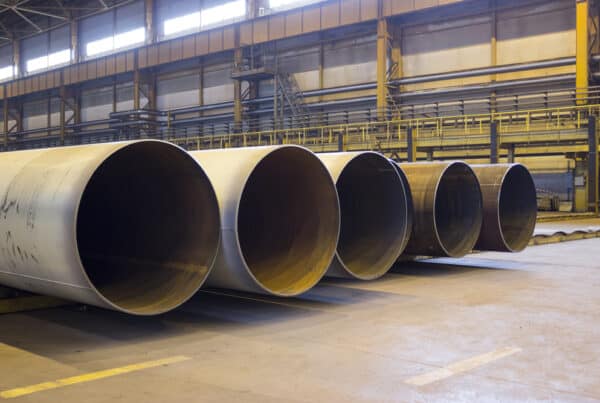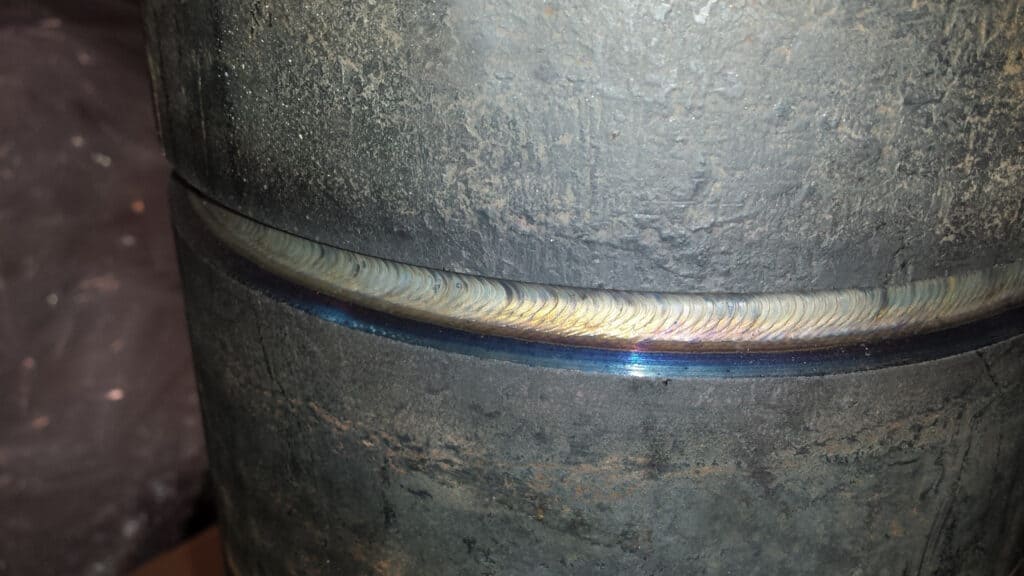
The long-time standard for welding pipes is shielded metal arc welding (SMAW), commonly called “stick” because of the rod-shaped consumable electrodes used. SMAW has been one of the most widely used forms of arc welding for decades. Qualified welders and SMAW equipment are widely available and this process is simple to set up and highly portable. This has made SMAW the standard way to weld pipe for many projects, from oil pipelines to beverage plants. However, SMAW isn’t necessarily the best way to weld pipe and is being replaced in many applications by wire feed pipe welding processes.
Using a wire feed extends the potential length of each individual weld. It also allows complicated fill or cap passes to be completed more quickly with fewer delays, speeding the completion of projects like big bore pipe welding. However, not all wire feed pipe welding is the same. Gas metal arc welding (GMAW) is the most common form of wire feed pipe welding, but can be unacceptable for high-specification projects. Other wire feed processes result in higher quality welds, but lack the flexibility needed for different types of pipe welding. Gas tungsten arc welding (GTAW) with wire has the quality and flexibility to be useful for many applications.
Comparing the Types of Wire Feed Pipe Welding Processes
Several types of wire feed welding processes are available, and each has its own advantages and disadvantages. GMAW welding—also called metal inert gas or MIG—is close to synonymous with wire feed welding, but it isn’t the best choice for every project.
Most high-specification pipe welding projects will need a wire feed pipe welding process that offers the flexibility to weld in different positions and locations.
Wire feed welding processes vary mainly in the quality of the welds they create and the speed of welding (deposition). There are also limits to where and how some of these processes can be used. Not all types of wire feed welding are portable enough to be deployed to construction sites. Others lack the mobility needed to move through every welding position and are largely confined to working in the flat. The chart below summarizes various wire feed pipe welding processes, the quality of the welds they produce, and whether they are suitable for deployment in field environments.
| Process | Shielding | Deposition | Heat | Quality | Portability | Mobility |
| Gas Tungsten Arc Welding (GTAW) | Gas | Low | Adjustable | High | Medium | Medium |
| GTAW-A (Hot Wire GTAW) | Gas | Medium | Adjustable | High | Medium | Medium |
| Gas Metal Arc Welding (GMAW) | Gas | High | High | Acceptable | Medium | Medium |
| Flux Core Arc Welding (FCAW) | Flux | High | High | Acceptable | High | Medium |
| Submerged Arc Welding (SAW) | Flux | High | Adjustable | High, and excellent in the flat position | N/A | N/A |
| Plasma Transfer Arc Welding (PTAW) | Gas | Superior | High | High, excellent in the flat position | N/A | N/A |
| Laser Welding | Gas | High | Adjustable | High, excellent in the flat position | N/A | N/A |
Wire feed pipe welding processes SAW, PTAW, and laser welding combine high speed and high quality. However, they are specialized setups that are confined to prepared facilities. Due to their size and the supporting equipment needed, they are also limited to welding in a fixed position, generally the flat position. As a result, in these processes, the weld head cannot be moved around the pipe. Instead, the pipe is moved around the electrode. For very large pipes, this requires using mechanized equipment to position and turn the pipe so the full diameter can be welded. The complexity of this setup limits the use of these methods. Most high-specification pipe welding projects will need a wire feed pipe welding process that offers the flexibility to weld in different positions and locations.
Mobile and Portable Wire Feed Arc Welding for Pipe
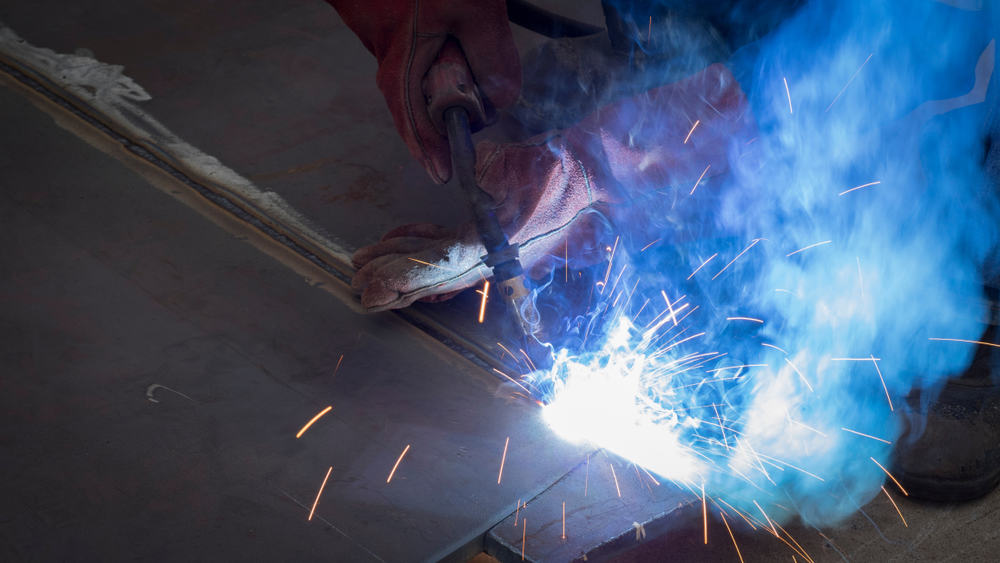
For many welders, FCAW welding might come to mind as a highly portable and flexible solution. Due to its use of flux for shielding, it can be used in field environments that aren’t conducive to gas-shielded welding. However, this dependence on flux for shielding also limits the quality of the welds and the types of materials that FCAW can be used to weld.
GTAW wire feed pipe welding, in particular, is well-known for its quality and lacks the fusion issues of GMAW.
FCAW is limited by:
- High Amperage: Flux core welding processes require high amperages and voltages to initiate and maintain the arc. This translates to high heat input and a high potential for burn through and distortion of the surrounding materials. This also creates a firm lower limit for the thicknesses of metal that FCAW can weld, since a base material that is too thin will burn through.
- Issues with Weld Purity: The flux at the core of the electrode can absorb atmospheric moisture and introduce excessive hydrogen and oxygen into the weld. Hydrogen can lead to the embrittlement of ferrous materials like steel and stainless steel, and oxides can create a host of weld defects.
- Metal Type: The range of metals that can be welded with flux core welding is limited largely to steels, stainless steels, aluminum, and some of the more commonly used exotic alloys like Inconel® and Monel® (with very specialized wire). Sensitive metals like titanium cannot be reliably welded using the process because the level of shielding is inadequate for the heat-affected zone.
The use of FCAW and other flux-dependent processes is best limited to carbon steels and some stainless steels and aluminum. Gas-shielded arc welding processes like GMAW and GTAW give up some of the portability of FCAW because they depend on shielding gas that can be blown away by wind or other airflow. However, the shielding gas makes it possible to strike and maintain an arc at a lower amperage, which widens both the range of metal thicknesses and the types of metals that can be welded. The quality of the resulting welds tends to be better as well. GTAW wire feed pipe welding, in particular, is well-known for its quality and lacks the fusion issues of GMAW. It offers the quality needed for high-specification projects while maintaining flexibility of use.
The Benefits of GTAW Wire Feed Pipe Welding
Tungsten inert gas welding is widely and justifiably known for the quality of the welds it produces. The use of a tungsten electrode to generate and maintain an arc offers the following advantages:
- Purity: Keeping the shielding, electrode, and fill material separate allows very pure finished welds.
- Heat Control: The process also gives a lot of fine control over amperage. This allows the welder to finely control heat input into the workpiece.
- Control Over Weld Profile: GTAW allows for a very fine degree of control over formation of the weld. The tungsten grind angle can affect weld penetration and the width of the weld, allowing the welders to control these variables in advance rather than depending on manual adjustments during welding.
Unfortunately, GTAW wire feed pipe welding also has some disadvantages. It is a difficult process for welders to master, and performing welds to high-specification standards takes considerable training and practice time. Automated orbital GTAW removes this disadvantage. It also eliminates welder fatigue as a factor from the process of completing pipe welds and allows the entire diameter of a pipe to be welded in one pass.
The technical and quality requirements for welding pipes in many industries are rising. Combined with an ongoing shortage in qualified welders, the quality and flexibility of orbital welding will make it the wire feed pipe welding process that replaces SMAW. Orbital GTAW wire feed pipe welding alone can meet new quality standards while providing the flexibility needed for use in multiple settings and positions.
Arc Machines, Inc. is an industry leader in high-specification orbital GTAW wire feed pipe welding. For inquiries regarding products, contact sales@arcmachines.com. For service inquiries, contact service@arcmachines.com. Contact us to learn more about custom wire feed pipe welding solutions.

